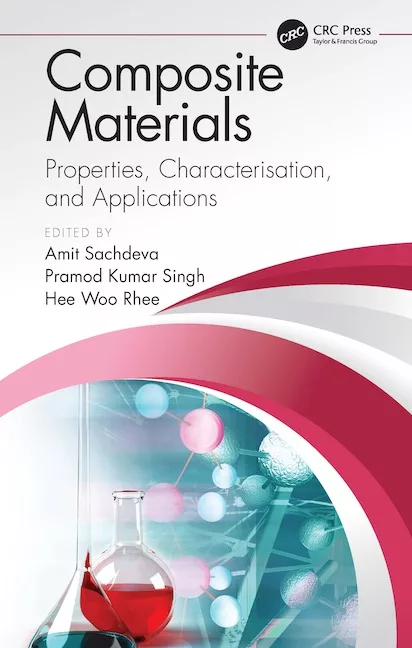Core-Shell Copolymers and Hybrid Composites as Valuable Raw Materials for Industrial Coatings


Because of environmental concerns, waterborne industrial coatings have been developing very rapidly in recent years. Polymer particles with heterogeneous morphology, like core-shell copolymers, are responsible for unique, tailor-made properties of coatings. This article describes the application of core-shell organic polymer binders and hybrid inorganic-organic polymer composites, occurring in the dual role of binder and pigment or functional filler.
Introduction
The main raw material classes used in paint formulas are binders, pigments, extenders, vehicles, and different additives. The replacement of solvent-based binders with more environmentally friendly waterborne or radiation-curing systems or powder coatings is one of the main challenges in industrial coatings. With these newer systems, emission of volatile organic compounds (VOCs) is limited, and flammability, toxicity and odor issues are reduced.1-3 For industrial paints, tailor-made raw materials fulfilling special requirements are very useful and desirable.
For certain applications, there is a need to develop polymer dispersions characterized by a big enough difference between higher glass transition temperature (Tg) and lower minimum film forming temperature (MFFT). The solution is a polymer with phase-separated morphology like core-shell copolymers. Such structures may be produced by a multi-step emulsion polymerization process and show unique physic-chemical properties impossible to obtain by the classic one-step polymerization process.4-9 Depending on reaction conditions, monomer composition, and content it is possible to obtain different heterogeneous morphology like core-shell, inverted core-shell, acorn, currant-buns, raspberry, multi-lobe, half-moon, or sandwich-like structures.10 Because core-shell species are the best known type of structure, very often this term is used for all heterogeneous polymeric particles.
Inverted core-shell copolymers have been applied for many years as polymeric opacifiers. The particle core contains polymeric acid, and the shell is permeable to base.11 After neutralization, the polar core swells and creates channels. The encapsulated air voids provide hiding without loss of coating resistance properties.
Development of Heterogeneous Binders for Waterborne Industrial Coatings
Copolymer dispersions are prepared by emulsion polymerization of chosen monomers. There is a big interest in acrylic polymers that are capable of forming nonporous, homogeneous films. These polymers have applications in the paint, plaster, adhesive, varnish, paper, and textile industries. So-called random, homogeneous copolymers are obtained in one-stage classic emulsion polymerization process.
If the polymerization process is two-step or multi-step with a differentiated monomer feed, it is possible to produce heterogeneous particles with phase-separated morphology. The final particle morphology depends on the method of monomer addition, their hydrophilicity / hydrophobicity, and compatibility. The reaction is conducted in a few stages to produce outer and inner parts of polymer with a different monomer composition. The sequential polymerization technique is a powerful tool for particle structure creation and allows the preparation of tailor-made dispersions with a desired set of chemical, physical, and mechanical properties.6, 12
Using this method it is possible to influence different polymer properties, such as:
- Monomer content and proportion of individual particle layers;
- Tg and MFFT responsible for the film forming properties of dispersion, anti-blocking properties, film flexibility, freeze-thaw stability, low dirt pick-up;
- amount of accessible polar, for example acid groups, responsible for colloidal stability of dispersion, for film adhesion and compatibility with inorganic substrate;
- additional crosslinking process using reactive groups via chemical reaction or radiation curing step;7, 13
- proper hydrophobic-hydrophilic balance.
Formation of a core-shell structure is favored during polymerization at low concentration of monomers, application of di-functional and tri-functional monomers, and monomers that differ in polarity. Minimum film forming temperature is dependent on the glass transition temperature of the polymer shell and amount of accessible acid groups, e.g. carboxylic, decreasing MFFT due to the water plasticizing effect.14 Because of different monomer content, the core and shell of polymer particles have various physical and chemical parameters responsible for the functional properties and final application of the polymer.
Heterogeneous copolymers with a soft shell and hard core are efficient binders in low-VOC or VOC-free paints, enamels, and varnishes. In contrary to random acrylics, core-shell polymers have relatively high Tg (good anti-blocking, low dirt pick-up) and respectively low MFFT (reduced need for coalescing agents).15, 16 Another idea is to create a hard shell with carboxylic functionality and a soft core. Such copolymers with low Tg mean value could be easily transformed into free-flowing, redispersible powders used as cement polymer additives for flexible concrete preparation.12, 14, 17-20 Hard shell polymer structures containing a core with carboxylic functionality are very efficient impact modifiers.21, 22
In some cases, a polymer particle prepared in a multi-step sequential process contains an intermediate polymer layer — an “intermediate shell” which allows more gradual change of properties of obtained heterogeneous polymer.18, 19
If a coating should be simultaneously hard and flexible, which seems to be a contradiction in itself, a solution could be a core-shell copolymer containing reactive groups capable of additional cross-linking process during or after physical drying of the polymer binder. Such a polymer has low MFFT, high Tg, and is very hard after final dry coating formation. For additional cross-linking, a typical chemical reaction or radiation curing step involving unsaturated centers grafted on the polymer shell may be used.13, 16, 23
A hybrid acrylic-alkyd binder obtained in emulsion polymerization of acrylic monomers on alkyd resin particles seems to be an interesting improvement in industrial paint binder development. Acrylic-alkyd hybrids showed faster drying than physical blends, the resulting film was homogeneous and smooth, and penetration into wood substrate was good.24 A further improvement could be a synthesis of acryl-alkyd hybrid on the polymer shell.
Polymer-Inorganic Composites as Advanced Pigments and Extenders
The role of pigments and extenders in coating materials is essential. Pigments dispersed in binders give color and opacity to the coating, extenders dispersed within the coating film increase density and hardness of the film, regulate permeability of gases and water, improve adhesion to the substrate, and influence degree of gloss. Anti-corrosive pigments protect metal surfaces from environmental influences in different ways, using a barrier effect, an electrochemical mechanism, or by forming a strongly bonded and sealed protective layer on the substrate. Very often these mentioned mechanisms occur together depending on the pigments, extenders, and binders used in the formulation.25
Different mixtures of inorganic particles with polymer binders have found application in many technical areas, including industrial coatings. Composites containing 75% of Al2O3 in the acrylic-styrene copolymer dispersions obtained by physical mixing are successfully used for ceramic tape preparation.26 Composite structures such as acrylated epoxidized jatropha oil containing graphene nanoplatelets as a functional extender improve coating hydrophobicity, barrier properties, and corrosion performances.27
A recently published review on the advanced hybrid inorganic-polymer layered coatings with a “brick and mortar” structure highlights their importance as anti-corrosion, self-healing, and anti-fouling coatings. As the “inorganic part,” different fillers may be used like graphene and its derivatives (graphene oxide, reduced graphene oxide), boron nitride, natural nanoclays, and layered double hydroxides. New hybrid anti-corrosion systems yield an even distribution and very efficient use of inorganic particles in the coating, excluding in the practice agglomeration of 2D-layered fillers, which is an issue in traditional paint systems.28 Specialty polymer composites with graphene and its derivatives show exceptional anti-corrosion barrier properties and are very useful in nanocomposite anti-corrosion coating systems.29
Calcium carbonate filler has low density, good whiteness, low interaction with pigments and binders, relatively low oil absorption, and an anti-corrosive effect due to its slight alkalinity. Calcium carbonate powders coated with stearic acid or its derivatives have been available as coatings raw materials since the 1950s.30 The next step of evolution is the development of inorganic-organic composites containing pigment and extender particles. Nanoparticles of CaCO3 coated with a layer of stearic acid could be encapsulated by a subsequent mini-emulsion polymerization process into a polymer shell. The same method is useful for incorporating other inorganic particles or carbon black in the polymer moiety. Inorganic particles used as raw materials in industrial paints may be encapsulated by polymers obtained in different ways, for example in radical polymerization, polycondensation, or polyaddition.31
Core-shell polymerization technology may provide an inorganic core-pigment or extender particle surrounded by a polymeric shell. Such structures, containing for example titanium dioxide, calcium carbonate, or talc particles evenly distributed in the coating, ensure maximum utilization of the pigment or extender. Due to the development of emulsion polymerization it is possible to obtain a 30 nm nano-SiO2 core surrounded by a polyacrylate shell used as a binder / extender system in a waterborne varnish characterized by good film-forming properties, high gloss, good organic solvent and water resistance, reduced flammability, and improved mechanical properties.32 Similarly, organic-inorganic composites containing SiO2 modified with reactive organic particles like isocyanates or epoxides improve coating anti-corrosive and barrier properties and scratch resistance.33 Using the layer-by-layer deposition technique, it is possible to obtain a bi-layer shell on the inorganic core. Obtained by this method, capsules may find applications in industrial and anti-corrosion coatings.34
Core-shell nanoparticles containing inorganic oxides (Fe3O4, ZnO, SiO2, TiO2, SnO2), metal derivatives (MnFe2O4, BaTiO3) and metals (Au, Ag, Cu) as a core have been used in electrical, magnetic, medical, and data storage applications.35 In a similar way, it is possible to apply such composites as valuable coating raw materials. Core-shell hybrid polymer consisting of a Si-modified butyl acrylate core and a styrene-acrylonitrile shell is an efficient impact modifier of poly (methyl methacrylate).36 Surface-initiated atom transfer radical polymerization seems to be a promising tool for grafting the polymers with regular structure and narrow molecular weight distribution on the surface of different inorganic nanoparticles.37
Conclusions and Areas for Further Development
Tailor-made waterborne core-shell polymers are increasingly used as binders in industrial coatings. Almost unlimited possibilities to control polymer properties make them the first-choice raw material in industrial metal protection, wood protection, and anti-fouling coatings. Furthermore, it is possible to obtain core-shell binders with an additional cross-linking mechanism by attaching reactive chemical groups to the polymer shell.
To tune binder final properties, a multi-layer shell, for example a bi-layer shell, heterogeneous polymers may be prepared.
Development of methods for the synthesis of inorganic-organic core-shell structures with pigment or extender particle as a core enables the effective use of inorganic raw materials and reduces their consumption. Even distribution of pigments and extenders in coatings eliminates the problem of material agglomeration in paint composition. The next stage of development may be the introduction of dual-role raw materials combining the binder and pigment / extender role in the one core-shell structure. This opens up completely new possibilities for formulating various types of industrial paints.
References
1 Padget, J.C.; Polymers for Water-Based Coatings – A Systematic Overview, Journal of Coatings Technology, 66, 12 (1994), 89-105.
2 van Westrenen, W.J. Modern Developments in Aqueous Industrial Coatings, J. Oil Col. Chem. Assoc., 1979, 62, 246-255.
3 Seymour, R.B. New Horizons in Coatings Science and Technology, Journal of Coatings Technology, Vol. 61, No. 776, 73-78, September 1989.
4 Aguiar, A.; Gonzales-Villegas, S.; Rabelero, M.; Mendizabal, E.; Puig, J.E. Core-Shell Polymers with Improved Properties Prepared by Microemulsion Polymerization, Macromolecules, 1999, 32, 6767-6771.
5 Saija, L.M.; Umiński, M. Synthesis and Characterization of Core-Shell Acid Functionalized Polyacrylate Dispersions, Surface Coat. Int. Part B: Coatings Transactions, 85, B2, 149-153, June 2002.
6 Umiński, M.; Saija, L.M. Synthesis and Application of Phase – Separated Acrylic Copolymer Dispersions, Paint & Coatings Industry, 20, 82-88, June 2004.
7 Umiński, M. Phase-Separated Polymer Dispersions, Paint & Coatings Industry, 25, 36-39, June 2009.
8 Xiang, L.; Xiao-Dong, F.; Min-Feng, T.; Ying, N. Synthesis and Characterization of Core-Shell Acrylate Based Latex and Study of Its Reactive Blends, Int. J. Mol. Sci., 2008, 9, 342-354.
9 Vandezande, G.A.; Rudin, A. Novel Composite Latex Particles for Use in Coatings, Journal of Coatings Technology, Vol. 66, No. 828, 99-108, January 1994.
10 Lee, S.; Rudin, A. The Mechanism of Core-Shell Inversion in Two-Stage Latexes, Journal of Polymer Science: Part A: Polymer Chemistry, Vol. 30, 865-871 (1992).
11 Blankenship, R.M.; Novak, R.W.; Vogel, M.; Kowalski, A. Polymeric Particles, European Patent 0565244 A1, 1993.
12 Saija, L.M.; Umiński, M.; Pieh, S.A. Redispergierbare, Pulverförmige Kern-Mantel-Polymere, Deren Herstellung und Verwendung, European Patent 0725092 A2, 1996.
13 Lundsten, G.; Lindberg, M. A Styrene Acrylic Dispersion for VOC-Free Paints and Plasters, Proceeding of 7th International Conference Advances in Coatings Technology, ACT ’06, 28 -30 November 2006, Warsaw, Poland.
14 Saija, L.M.; Umiński, M. Water-Redispersible Low-Tg Acrylic Powders for the Modification of Hydraulic Binder Compositions, Journal of Applied Polymer Science, 71, 1781-1787 (1999).
15 Garzon, A. Waterborne Meets Solventborne, European Coatings J., 2003, 56-64, No. 9.
16 Umiński, M. Environment-Friendly Polymeric Binders, Paint & Coatings Industry, 23, 38-43, August 2007,
17 Umiński, M.; Saija, L.M. Spray Drying of Low-Tg Acrylic Latices, Surface Coat. Int., Vol. 81, No. 11, 557-560, November 1998.
18 Umiński, M.; Saija, L.M. Preparation and Characterization of Re-Dispersible Acrylic Powders, Pigment & Resin Technology, 32 (6), 364-370 (2003).
19 Umiński, M.; Saija, L.M. Redispersible Acrylic Powders, in Materials of 7th Conference “Otrzymywanie, zastosowanie i analiza wodnych dyspersji i roztworów polimerów”, Szczyrk, Poland, 9-10 October 2003.
20 Caimi, S.; Timmerer, E.; Banfi, M.; Storti, G.; Morbidelli, M. Core-Shell Morphology of Redispersible Powders in Polymer – Cement Materials, Polymers 2018, 10(10), 1122 https://doi.org/10.3390/polym10101122
21 Arkema technical information.
22 Yong, Ch.S.; Neon, G.S. Effect of Monomer Composition on the Swelling of Core-Shell Copolymers with High Content of Carboxylic Groups, Malaysian Journal of Chemistry, 2005, Vol. 7, No. 1, 62-68.
23 Lundsten, G. Improved Chemical Resistance of Waterborne Industrial Acrylics, Farby i Lakiery, 27, 21-25, 3 (2019).
24 Heiskanen, N.; Jamsa, S.; Paajanen, L.; Koskimies, S. Synthesis and Performance of Alkyd-Acrylic Hybrid Binders, Progress in Organic Coatings, Vol. 67 (2010), 329-338.
25 Zubielewicz, M.; Kamińska-Tarnawska, E. Pigmenty i wypełniacze – wpływ upakowania fazy stałej na właściwości wyrobów lakierowych, Instytut Inżynierii Materiałów Polimerowych i Barwników, Toruń 2013.
26 Szafran, M.; Rokicki, G. Effect of Acrylic-Styrene Copolymer Chemical Structure on the Properties of Ceramic Tapes Obtained by Tape Casting, Journal of the American Ceramic Society, Vol. 84, 1231-1235, June 2001.
27 Li, W.J.; Aung, M.M.; Rayung, M.; Ngee, L.H.; Wun Fui, M.L. Bio-Based Acrylated Epoxidized Jatropha Oil Incorporated With Graphene Nanoplatelets in the Assessment of Corrosion Resistance Coating, Progress in Organic Coatings, Vol. 175 (2023), 107349.
28 Teijido, R.; Ruiz-Rubio, L.; Gallardo Echaide, A.; Vilas-Vilela, J.L.; Lanceros-Mendez, S.; Zhang, Q. State of Art and Current Trends on Layered Inorganic – Polymer Nanocomposite Coatings for Anticorrosion and Multi-Functional Applications, Progress in Organic Coatings, Vol. 163, February 2022, 106684.
29 Böhm, S. Graphene Against Corrosion, Nat. Nanotechnol., 9 (2014), 741-742.
30 Strauch, D. Surface Coatings, in Calcium Carbonate from the Cretaceous Period into the 21st Century edited by W. F. Tegethoff, Birkhäuser Verlag, Basel 2001.
31 Landfester, K. Designing Particles – Mini-emulsion Technology and Its Application in Functional Coating Systems, European Coatings Journal 2005, 20-25, No. 12.
32 Roscher, C. Tiny Particles, Huge Effect, Paint & Coatings Industry, 46-52, October 2003.
33 Sanches, C.; Soler-Illia, G.J.; Ribot, F.; Lalot, T.; Mayer, C.R.; Cabuil, V. Designed Hybrid Organic-Inorganic Nanocomposites from Functional Nanobuilding Blocks, Chem. Mater., 2001, 13, 10, 3061-3083.
34 Simon, Ch. Designer Packaging – Nanocapsules Can Provide Controlled Release Systems for Coatings, European Coatings Journal 2007, 32-37, No. 2.
35 Chiozzi, V.; Rossi, F. Inorganic-Organic Core / Shell Nanoparticles: Progress and Applications, Nanoscale Advances, 2020, 2, 5090-5105.
36 Xia, J.; Luo, X.; Huang, J.; Ma, J.; Yang, J. Preparation of Core / Shell Organic – Inorganic Hybrid Polymer Nanoparticles and Their Application to Toughening Poly (Methyl Methacrylate), RSC Advances, 2021, 11, 34036-34047.
37 Siyuan, Ch.; Xu, D.; Liusheng, Z. Inorganic / Organic Core – Shell Composite Nanoparticles by Surface – Initiated Atom Transfer Radical Polymerization, Progress in Chemistry, 2015, 27(7), 831-840.
Looking for a reprint of this article?
From high-res PDFs to custom plaques, order your copy today!





